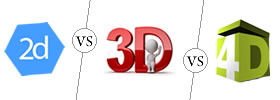

Thus the most probable radius obtained from quantum mechanics is identical to the radius calculated by classical mechanics. This peak corresponds to the most probable radius for the electron, 52.9 pm, which is exactly the radius predicted by Bohr’s model of the hydrogen atom.įor the hydrogen atom, the peak in the radial probability plot occurs at r = 0.529 Å (52.9 pm), which is exactly the radius calculated by Bohr for the n = 1 orbit. Because the surface area of each shell increases more rapidly with increasing r than the electron probability density decreases, a plot of electron probability versus r (the radial probability) shows a peak. (d) If we count the number of dots in each spherical shell, we obtain the total probability of finding the electron at a given value of r. There are similar orbitals at subsequent levels: 3p x, 3p y. The p orbitals at the second energy level are called 2p x, 2p y and 2p z. Figure 3: Hydrogens electron - the 2p orbitals. This is simply for convenience the x, y, and z directions change constantly as the atom tumbles in space. (c) The surface area of each shell, given by 4π r 2, increases rapidly with increasing r. These are arbitrarily given the symbols px, py and pz. The density of the dots is therefore greatest in the innermost shells of the onion. (b) A plot of electron probability density Ψ 2 versus r shows that the electron probability density is greatest at r = 0 and falls off smoothly with increasing r.
#3d vs 4d shape chemistry series#
The transition metal series is defined by the progressive filling of the 3d orbitals. There are a total of five d orbitals and each orbital can hold two electrons. 3D is used in movies, gaming, and architecture, while 4D is used in theme park rides and other immersive experiences. 4D adds the element of time to the equation, allowing for a more dynamic and interactive experience. Click the images to see the various 3d orbitals. 3D refers to a three-dimensional object or image with height, width, and depth. (a) Imagine dividing the atom’s total volume into very thin concentric shells as shown in the onion drawing. An illustration of the shape of the 3d orbitals.



 0 kommentar(er)
0 kommentar(er)
